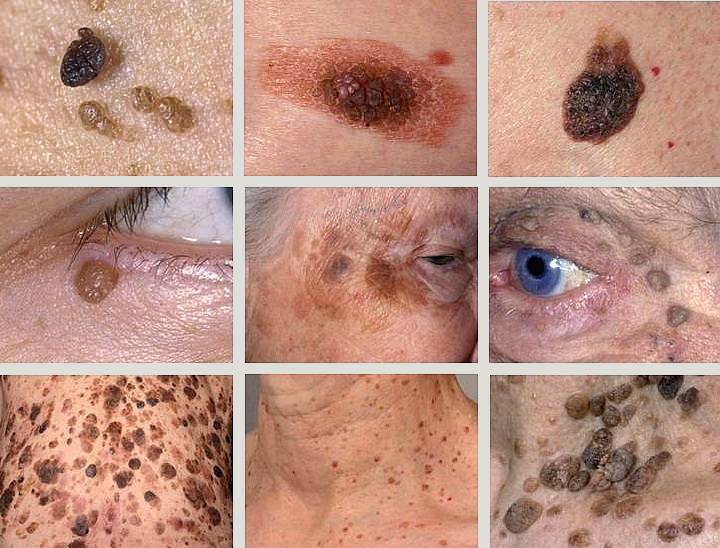 Thanks to DermNet for the range of images, which show how varied seborrhoeic warts can be.
Thanks to DermNet for the range of images, which show how varied seborrhoeic warts can be.
Seborrhoeic warts, also known as seborrhoeic keratoses are benign growths, often on the torso, forehead, or face, although they can appear elsewhere. They tend to come with age but are far from rare in younger adults.
In a medical sense, seborrhoeic warts are harmless and might be described as not needing treatment, with two important caveats.
If they are irritating, or itching, seeking treatment is reasonable, as is removal for aesthetic reasons. Seborrhoeic warts are often in displeasing places and can effect confidence, or interfere with life.
The second reason for accurate diagnosis, possibly treatment, is a tendency for seborrhoeic warts to be confused with other conditions.
Clarity Of Diagnosis
Putting a precise figure on what doesn’t happen is difficult, which is the case with medical misdiagnosis. Nevertheless, anecdotal evidence, research which exists and experience point to concerns on seborrhoeic warts.
A 2022 review of other studies at the US National Library of Medicine emphasised the need for professional diagnosis. Stating that overlapping malignant lesions can be missed amongst multiple seborrhoeic warts, or there can be diagnostic confusion with:
- Actinic keratosis
- Lentigo maligna
- Melanocytic nevus
- Malignant melanoma
- Squamous cell carcinoma
- Pigmented basal cell carcinoma
Seborrhoeic warts in the genital area may be misdiagnosed as HPV lesions, or extramammary Paget’s disease, or the other way around. A possible crossover between the condition and dermatitis is not always well understood.
If you notice a change in a seborrhoeic wart, this should be examined by a consultant dermatologist. Even if not, where diagnosis has not come from a specialist an examination can provide confirmation, or identify other conditions.
Treatment Decisions
Diagnosis based on experience and the use of technology such as digital dermoscopy could lead to another condition being found. Timely treatment can be offered, perhaps for a type of skin cancer.
Where seborrhoeic warts are confirmed, you have a right to make a decision on treatment. Studies to date, including a practice based analysis in 2017 have found that clinicians can underestimate the effect seborrhoeic warts have on patients.
Even where the lesions are known not to be malignant and are not bringing practical issues, many people would prefer to be treated. We respect the decisions of patients and offer individual treatment at our London clinic.
Physical removal by curettage and cautery (scraping and heat) or shaving is a possibility. Chemical options can be suitable, or laser surgery, although in the majority of cases, cryotherapy (freezing with liquid nitrogen) is a sound choice.
Personal Support
The choice of treatment can depend on a lesion’s size, thickness, location, or the make up and condition of your skin. As with your decision on whether to proceed, treatment should be tailored to individual needs.
A critical aspect is to have the condition correctly diagnosed by a professional dermatologist. This avoids risks from misdiagnosis and brings peace of mind.
You are welcome to read a little more on treating seborrhoeic warts, along with removing other lesions and moles. Or get in touch with our team to arrange an appointment, or for any advice you need.
All advice is free and we have a comprehensive dermatology section on this website. You may for example wish to see details on treating viral warts, a little different from seborrhoeic warts but just as deserving of good care.
